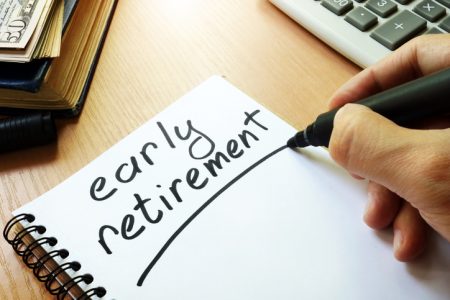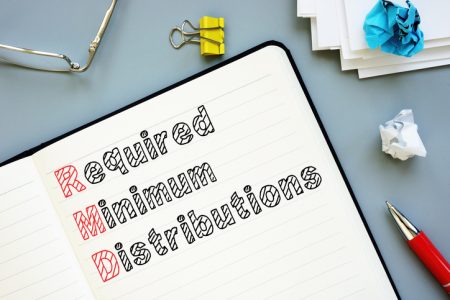An Employee Stock Ownership Plan (ESOP) gives employees an ownership stake in the company. It does this at no direct cost by allocating shares of company stock to their retirement accounts. In contrast, a 401(k) allows employees to save and invest a portion of their paycheck. These plans often offer employer matching for extra savings, and utilize a range of investment options like mutual funds. Both plans help employees build financial security for the future, but differ significantly in structure, tax advantages, and potential risks.
A financial advisor can help you determine how these benefits fit your overall retirement strategy.
What Is an ESOP?
An Employee Stock Ownership Plan, or ESOP, gives employees an ownership stake in their company. Unlike a traditional retirement account that offers different types of investments, an ESOP primarily invests in the employer’s own stock. The company allocates shares to employees, often at no cost to them, that grow in value as the company grows. This creates a financial and cultural incentive for employees to contribute to the long-term success of the business.
Employers typically fund the entire ESOP. Companies can contribute either newly issued shares, existing shares, or cash to purchase shares on behalf of employees. The contributions are tax-deductible for the company. Employees don’t pay taxes on their shares until they receive distributions, usually when they retire or leave the company. This makes ESOPs a powerful tool for both business succession planning and employee wealth-building, particularly for privately owned companies.
The number of shares each employee receives depends on their salary level, years of service, or a combination of both. Most ESOPs have a vesting period. This means employees must work for a certain number of years before they fully own their allocated shares. Once vested, employees have the right to the value of their shares when they leave. Usually the company buys them back at fair market value. This ensures that ownership remains within the company while still rewarding departing employees for their contributions.
How 401(k) Investments Work

A 401(k) is a tax-advantaged retirement savings plan. It allows employees to invest a portion of their paycheck into long-term investments, often with matching contributions from their employer. Unlike an ESOP, which centers on company stock, a 401(k) typically offers a range of investments. This includes options such as mutual funds, index funds, and sometimes company stock among other choices. Contributions are made pre-tax for traditional 401(k)s. This reduces an employee’s taxable income in the year they’re made, and investment earnings grow tax-deferred until withdrawal in retirement.
One of the defining features of a 401(k) is the range of investment options. These often include equity funds, bond funds, and target-date funds designed to automatically adjust risk over time. This flexibility allows participants to diversify their portfolios according to their age, risk tolerance, and retirement goals. It helps reduce exposure to market volatility compared to plans concentrated in a single stock.
Many employers enhance the value of a 401(k) by matching a portion of the employee’s contributions—commonly a percentage of salary up to a set limit. These matches act as an immediate return on investment, accelerating account growth. Employees who invest early in their careers benefit from decades of compounding interest, which can result in substantial retirement savings.
Major Differences of Investing in an ESOP vs. 401(k)
While both ESOPs and 401(k)s are qualified retirement plans under U.S. law, they work in fundamentally different ways. An ESOP builds around employee ownership in the company, while a 401(k) focuses on broad investment flexibility. Understanding their key distinctions can help employees make the most of each plan and create a balanced retirement strategy.
- Ownership vs. Investment Diversification: An ESOP invests primarily in the employer’s stock, giving employees a direct stake in the company’s success. A 401(k) offers a menu of investment options, allowing participants to diversify across asset classes like stocks, bonds, and funds.
- Who Funds the Plan: Employers fund ESOPs with shares allocated at no cost to the employee. In contrast, employee contributions fund 401(k)s, often supplemented by an employer match.
- Risk Profile: The value of an ESOP is tied to the company’s performance, which can lead to higher rewards—or losses—based on business results. A 401(k) spreads risk across multiple investments, reducing the impact of any single company’s downturn.
- Tax Treatment: A traditional 401(k) reduces taxable income in the year of contribution, while ESOP contributions are not made by the employee and therefore don’t affect their taxable wages. In both plans, taxes are deferred until distributions are taken.
- Liquidity and Access to Funds: ESOP payouts typically occur when an employee leaves the company, with shares repurchased at fair market value. 401(k) funds can be accessed in retirement or, with penalties, for certain early withdrawals or loans.
Neither plan is inherently better, so comparing each comes down to the benefits offered, an employee’s financial goals, and their tolerance for risk. Many employees benefit most when they participate in both, leveraging the growth potential of company ownership alongside the diversification of market-based investments. A well-balanced approach can help protect retirement savings through both economic cycles and company-specific changes.
Can You Invest in Both an ESOP and a 401(k)?
In many companies that offer an Employee Stock Ownership Plan, employees can also contribute to a 401(k). These two plans are not mutually exclusive, and participating in both can diversify retirement savings while taking advantage of different benefits. The ESOP provides an ownership stake and potential gains tied to the company’s success, while the 401(k) offers broader investment choices and the ability to tailor a portfolio to individual risk preferences.
Investing in both plans allows employees to balance the concentrated nature of ESOP shares with the diversification potential of a 401(k). Because ESOP accounts depend on a single company’s performance, using a 401(k) to invest in mutual funds, bonds, or index funds can help reduce overall risk. This dual approach can create a more resilient retirement strategy, especially for employees in industries where market conditions can change rapidly.
Bottom Line

Both ESOPs and 401(k)s can play powerful roles in building long-term financial security, but they do so in very different ways. An ESOP offers the unique advantage of company ownership and the potential for significant growth tied to business success, while a 401(k) provides diversification, flexibility and more control over investment choices. For employees with access to both, combining the two can create a well-rounded retirement strategy that balances risk and reward. Understanding how each plan works, and how they can complement each other, is key to making informed decisions that maximize your retirement savings.
Tips for Retirement Planning
- A financial advisor can help you create a long-term retirement plan and then help you manage your investments to make sure you get there. Finding a financial advisor doesn’t have to be hard. SmartAsset’s free tool matches you with vetted financial advisors who serve your area, and you can have a free introductory call with your advisor matches to decide which one you feel is right for you. If you’re ready to find an advisor who can help you achieve your financial goals, get started now.
- A retirement calculator can help you estimate the amount of money you might need to save for the retirement you want.
Photo credit: ©iStock.com/syahrir maulana, ©iStock.com/AndreyPopov, ©iStock.com/Jacob Wackerhausen
Read the full article here












